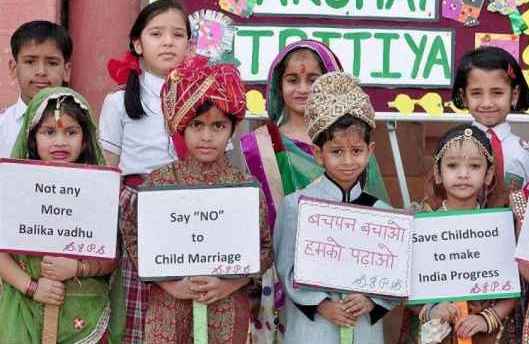Bhubaneswar: Despite awareness, there has been an unbridled prevalence of child marriages in Odisha and it varies widely between districts.
As per National Family Health Survey (NFHS), Malkangiri district accounts for the highest rate of child marriages in the State where 39.3 per cent of girls are married off before they attain the legal age of 18 years.
The increasing number of child marriages in Malkangiri has become a cause for concern for the authorities. While child marriages account for 26.8% of marriages taking place in India, Odisha records 21.3% on an average as against 39.3 per cent in Malkangiri district.
While Malkangiri tops the list, numbers in Nabarangpur (37.9 pc), Mayurbhanj (35 pc), Koraput (34.7 pc), Rayagada (34.4 pc), Nayagarh (31.3 pc), Ganjam (29.8 pc) and Keonjhar (28.1 pc) districts also lie well above the national average.
According to information, 63 per cent of the families below poverty line in Rayagada district get their kids married at a tender age. Similarly, 33 per cent of well-to-do families get their children married off early. In the same vein, 68 per cent of illiterate families get children married off, as against 35 per cent of literate families of Rayagada district.
To make Odisha Child Marriage free by 2030, the state government recently launched a Strategic Action Plan (SAP) with the support of UNICEF and UNFPA.
The State Strategic Action Plan, to be implemented between 2019 and 2024, is a comprehensive and time-bound approach to accelerate actions to deal with the complexities of ending child marriage.
Girls are denied their basic rights like right to education, health and social security due to their marriage at an age when they are not mentally or physically prepared. On the other hand, the burden of family management falls on them at an early age.
Socio-economic analysts opine that 67 per cent of the womenfolk face critical health disorders during pregnancy and childbirth due to early marriage. Child marriage gives rise to issues like malnutrition, population explosion, poverty, illiteracy and unemployment.
This also gives rise to social stigmas like divorce and family-disputes. Experts opine that in spite of law banning child marriage, the evil practice continues to go on in many places which directly affect the health of women. It is also a major reason for infant and maternal mortality.
Notably, a human-chain comprising 2.25 lakh commoners and 1.5 lakh schoolchildren was organized in the district this year to generate awareness against child marriages.
PNN







































